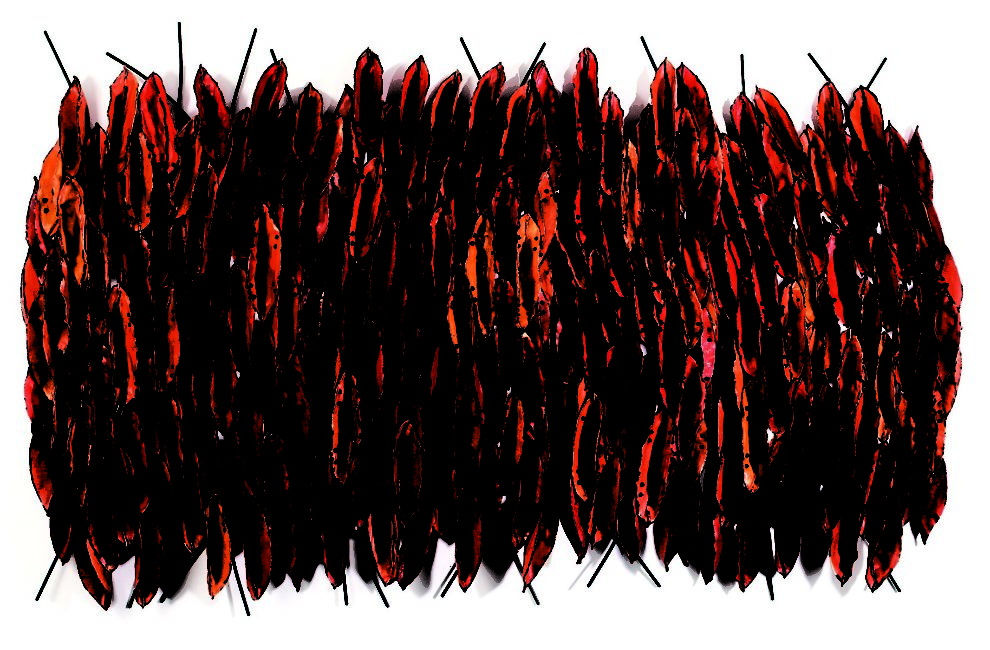
The Eiteljorg Museum Adds to Its Contemporary Collection
Open the heavy wooden doors at the Eiteljorg Museum, and you’ll walk through several galleries that could easily be named Things You Expect to See at a Native American and Western Museum. Paintings of tribal dances. Sculptures of cowboys and horses. Masks, blankets, and other artifacts.
The surprise comes at the back of the second floor. There, two rooms exhibit works with a lot more edge. A deconstructed totem pole. A spray-painted stuffed fox. A ring of 12 large barbed-wire balls suspended from the ceiling. Those spaces make a clear point: Native American and Western art is much more than beads and feathers. The Eiteljorg’s contemporary galleries display just a fraction of the museum’s 500-plus pieces of modern art, regarded as one of the world’s best collections. And it will get even bigger when the Contemporary Art Fellowship exhibition brings dozens of new works to the museum, starting November 14.
Only a few Native American museums share the Eiteljorg’s commitment to collecting contemporary works, and they’re mostly on the East Coast and in the Southwest. So why here? In 1999, the 10-year-old museum—founded by local businessman and philanthropist Harrison Eiteljorg—convened a group of board members, staff, and Native American artists to figure out how to generate buzz. “We sat down and said, this is the area that we want to be nationally known for,” says Jennifer Complo McNutt, the Eiteljorg’s curator of contemporary art. “This is an area that this young museum can promote and nurture.”
The Contemporary Art Fellowship is the museum’s main method of promoting and nurturing. Every two years, a panel of artists and curators chooses five artists who each receive $25,000 and get to exhibit at the Eiteljorg. With support from the Lilly Endowment, the museum also buys $115,000 worth of the artists’ work to add to the permanent collection. So far, the museum has purchased more than 200 pieces from 50 fellows.
This year’s exhibition includes paintings inspired by abstract expressionism, waxed cloth sculpted around steel rods, and a multimedia installation of faces and masks on drums that seem to sing in Tlingit. An artist who was sexually assaulted created an installation that uses 3,780 red cords—one, she says, for each of the unreported rapes that occur each day in the United States. “All of the art that you see in the Eiteljorg’s contemporary collection could easily be put in the collection of any mainstream museum and be right at home,” says Kay WalkingStick, an artist who has exhibited there. Once you see the art, that’s no surprise.







